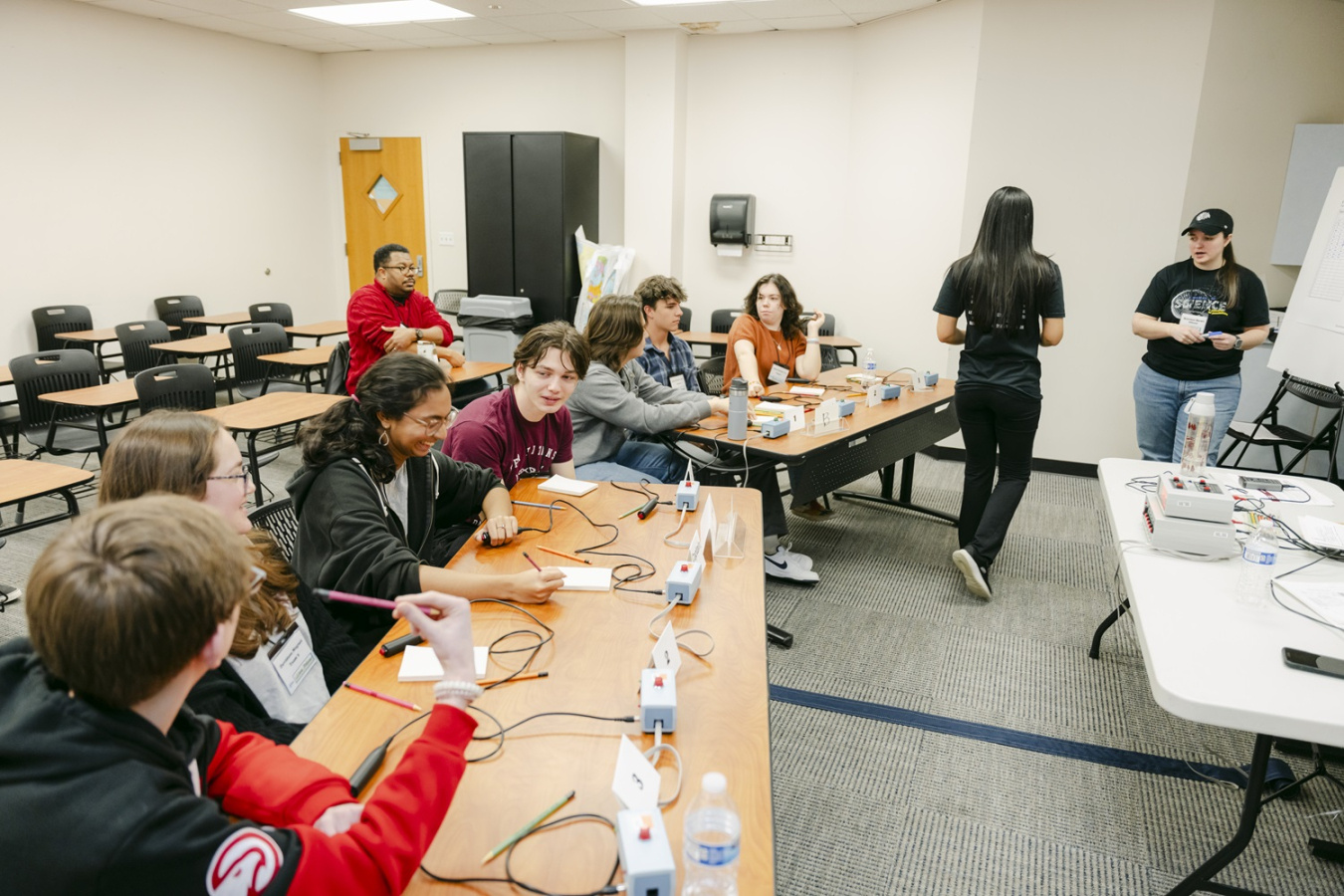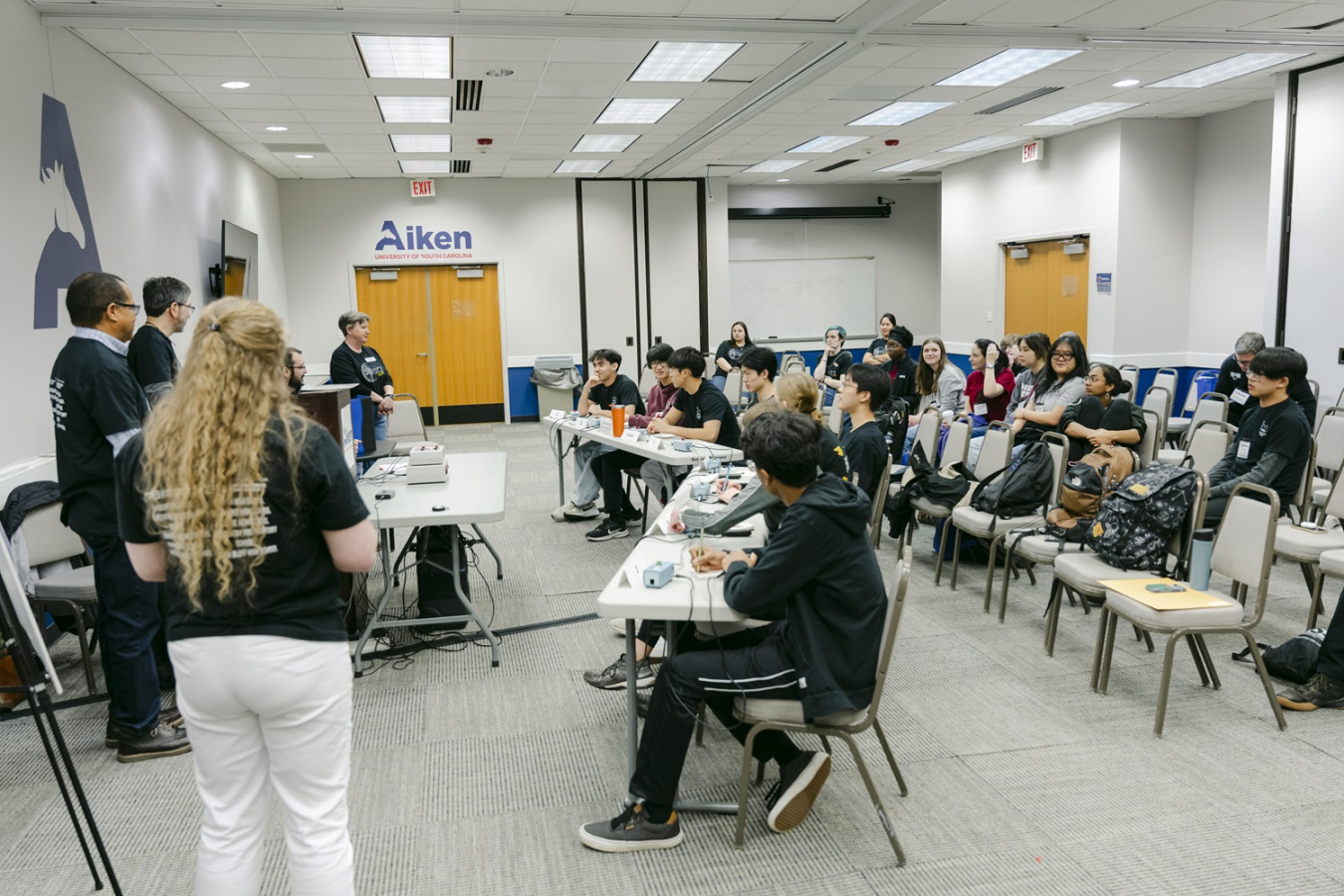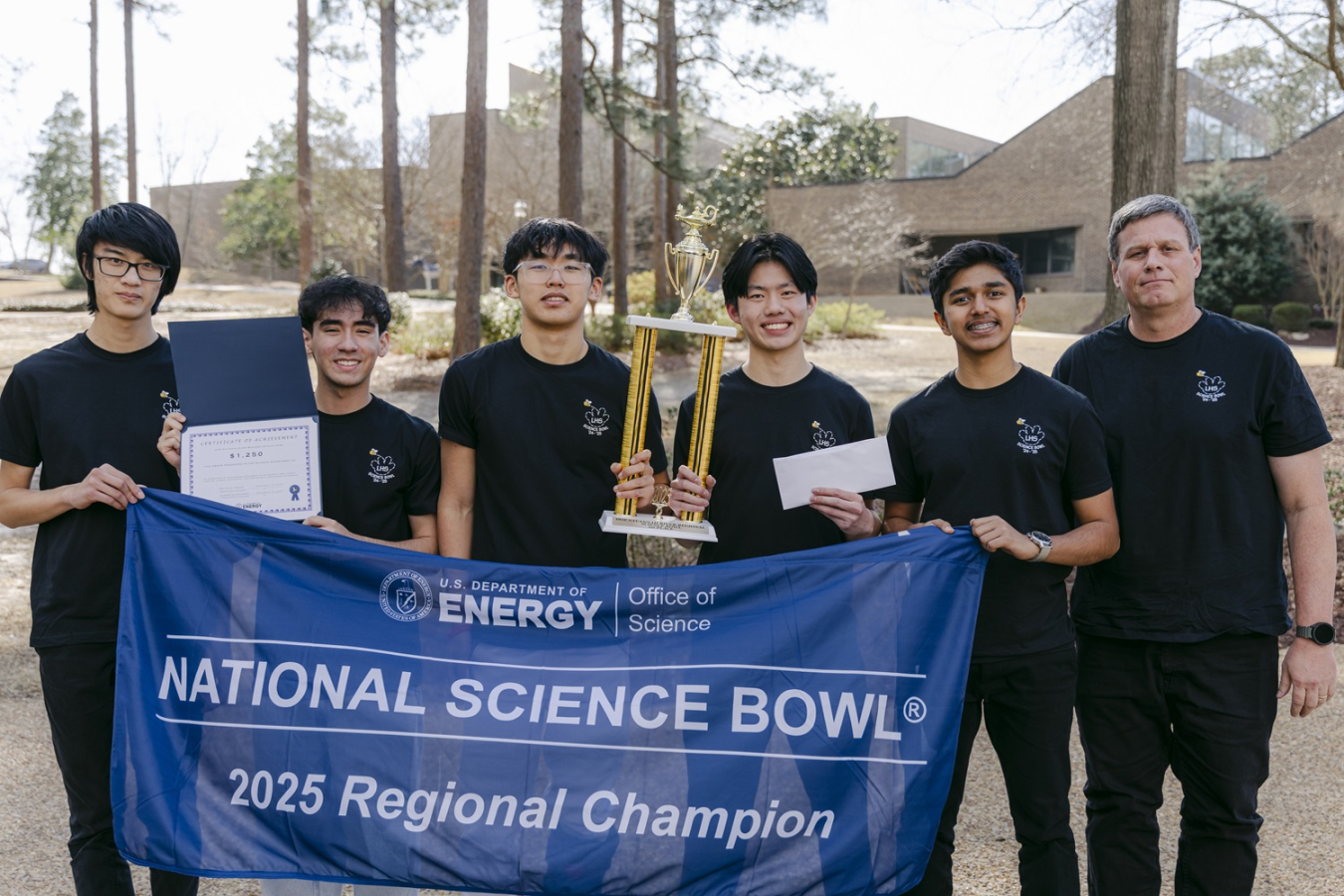Future scientists, engineers and mathematicians recently put their knowledge to the test during the annual U.S. Department of Energy Savannah River Regional Science Bowl at the University of South Carolina Aiken.
Office of Environmental Management
March 18, 2025This year's winner of the Savannah River Regional Science Bowl, Lakeside High School Team 1 from Evans, Georgia, earned a trip to the U.S. Department of Energy National Science Bowl in Washington, D.C. From left: David Wang, Matias Riveros-Amado, Jerry Fan, George Zhou, Arnav Patel and Coach David Arrington.
Challenging America’s brightest in one of the most prestigious academic science competitions
AIKEN, S.C. — Future scientists, engineers and mathematicians recently put their knowledge to the test during the annual U.S. Department of Energy (DOE) Savannah River Regional Science Bowl at the University of South Carolina Aiken.
Lakeside High School Team 1 of Evans, Georgia, emerged victorious among the 63 participants from 10 high schools, earning a trip to DOE’s National Science Bowl competition in Washington, D.C., scheduled for April 24-28. Lakeside High School Team 2 secured second place, while Davidson Fine Arts Magnet School claimed third.
Coordinated by the Education Outreach Program of Savannah River Nuclear Solutions (SRNS), a DOE Office of Environmental Management contractor at the Savannah River Site (SRS), the event attracted 14 teams from South Carolina and the greater Augusta, Georgia, area.
"Sponsoring STEM events like the Science Bowl is crucial for DOE and SRNS because it brings awareness and exposure to students," said Cindy Hewitt, SRNS education outreach specialist. "They see how math and science impact the world around them and learn about career opportunities at SRS."
David Arrington, coach of the Lakeside High School teams, explained that the school holds tryouts and practices year-round to prepare for the competition.
“My students have grown tremendously, both independently and as a team. Science Bowl brings a competitive edge to science education, encouraging a deeper love for the subject,” said Arrington.

Teams from Davidson Fine Arts Magnet School of Augusta, Georgia, and Aiken Scholars Academy prepare for practice rounds.

Team members from Augusta Preparatory Day School in Georgia prepare for a brain teaser activity with the American Chemical Society.

Teams 1 and 2 from Lakeside High School face off in the final round of the U.S. Department of Energy Savannah River Regional Science Bowl.
Jerry Fan, a senior on Lakeside High School Team 1, reflected on his team’s journey.
"We've worked hard for this moment, and it feels fantastic. I started participating in Science Bowl back in seventh grade, and my interest has only grown, particularly in biology and physics,” Fan said. “We're ready to take home the trophy at nationals."
Each team, comprised of five students and one coach, compete in a fast-paced question-and-answer format similar to the television show “Jeopardy!” The questions span academic disciplines including biology, chemistry, Earth science, space science, physics, energy and math.
Silver Bluff High School of Aiken participated in the regional event for the first time this year.
"I'm extremely proud of our teams’ dedication and commitment. Despite their busy schedules, they never missed a practice,” said Silver Bluff coach Rachel Harrell.
Volunteers from multiple site contractors, including judges, scorekeepers, moderators, and timekeepers, made the regional tournament possible.
"I love watching competitors be so enthusiastic about STEM," said Greyam Hayes, SRNS design authority engineer. "You see their confidence grow with each 'buzz' in."
Teams from across the U.S. compete in 65 regional tournaments to advance to the DOE National Science Bowl. Approximately 344,000 students have faced off in the finals.
-Contributor: Mackenzie McNabb


